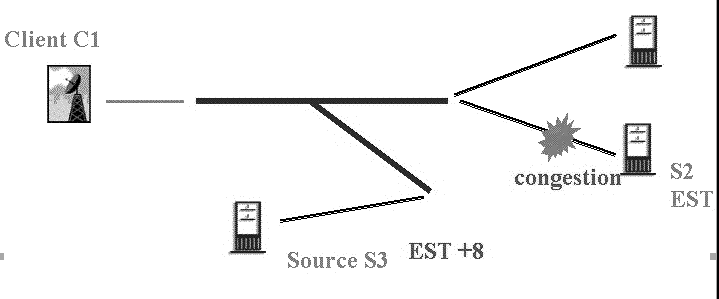 |
Figure 1 illustrates some clients and servers. Suppose the Internet distance between the client and the three servers in the figure are presumed similar. A router located close to server S2 acts as a potential point of congestion, and therefore we may conclude that server S2 should not be included in the cluster. Similarly, we observe that server S3 is in a different time zone from the other servers, excluding server S3 from the cluster, due to the significance of time of day in latency estimation.
Determining the Internet distance or identifying points of congestion may be intrusive and expensive. In contrast, BGP routing information is often publicly accessible and is often stable over relatively long periods of time. Therefore, our initial efforts are focused on two factors, namely the feature vectors from latency distributions that were used by the WebPT, and BGP based AS-PATHs between clients and servers.